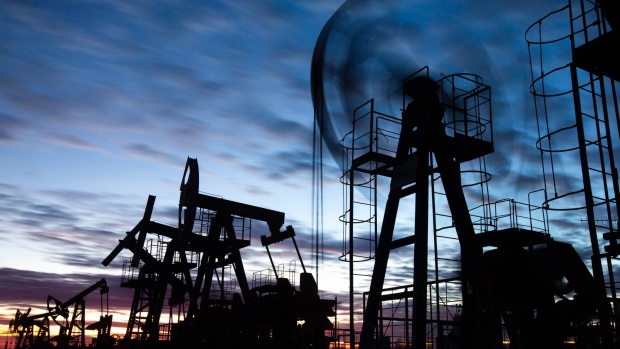Feb 10, 2023
Russian Oil Cuts, Chinese Demand Revival Threaten Renewed Inflation Pressure
, Bloomberg News

(Bloomberg) -- From Russian supply cuts to recovering Chinese demand, tightening oil markets are firing up oil bulls — threatening to stoke inflation.
The Kremlin announced on Friday it will slash output by 5% as sanctions over the war in Ukraine deter customers, compounding a week of disruptions around the world, while its partners in the OPEC+ alliance show no inclination to fill the gap.
At the time time, Chinese fuel consumption is climbing higher as the world’s biggest oil importer emerges from Covid lockdowns, spurring state giant Unipec to snap up millions of barrels from the Middle East and sending regional price benchmarks soaring.
“The Russian cut is very bullish, the Chinese reopening is very bullish, the balances will tighten in the second half and we’ll have very low stockpiles,” said Gary Ross, a veteran oil consultant turned hedge fund manager at Black Gold Investors LLC. “The price is too low.”
Tighter supply and stronger demand are shoring up an oil market that has had a volatile start to the year as swelling stockpiles left Wall Street analysts sharply divided on whether prices — trading near $86 a barrel — will soon return to triple digits.
But it also risks fanning inflation, complicating the work of the Federal Reserve and other central banks as they seek to stimulate growth while containing the cost-of-living crisis afflicting millions around the world.
US inflation ran at 8% last year and economists are anticipating still-elevated levels through the end of this quarter. In the European Union, it surged to 8.9% in 2022, significantly bolstered by the energy crisis that followed Russia’s war in Ukraine.
Russia’s announcement on Friday — it plans to cut output by 500,000 barrels a day next month, about half a percent of global demand — follows through on repeated threats to retaliate against international sanctions on its petroleum trade. The move bolstered Brent crude futures by almost 3% at one stage on Friday.
This week, the European Union expanded a ban on imports of Russian crude oil to include sales of refined products like diesel fuel. Buyers outside the bloc can only access its shipping insurance and services if their purchases of Russian oil are below a specified price cap.
If policymakers are hoping for any compensatory response from Russia’s counterparts in the OPEC+ group of producers, they’re set to be disappointed.
Saudi Arabia and its partners don’t intend to increase production to make up for the shortfall, delegates said privately on Friday. Officials say the Organization of Petroleum Exporting Countries and its partners are set on holding output steady for the rest of the year, as demand remains too fragile to absorb additional barrels.
“We don’t think they need to increase production this year, and more importantly, I don’t think they think they need to,” Bob McNally said to Bloomberg TV. “They’re in hunker-down mode.”
Saudi Energy Minister Prince Abdulaziz bin Salman insisted last week in Riyadh that the bar for any intervention will be very high: “I will believe it when I see it and then take action.”
Meanwhile, Chinese demand is showing signs of a vigorous comeback. Domestic flights soared 80% over the Lunar New Year after the decision to scrap almost three years of stringent lockdowns unleashed pent-up demand. Traffic congestion in major cities has tripled since the end of the holiday, according to BloombergNEF.
Taken together, the constrictions on supply and optimism for demand prompted UBS AG to reiterate its “positive price outlook” for crude and advise risk-minded investors to take long positions.
“Lower Russian production together with China’s reopening should tighten the oil market further over the coming quarters,” said Giovanni Staunovo, an analyst the bank in Zurich.
Yet the move didn’t spark a flurry of price-forecast upgrades, and Friday’s gain represents a modest increase given oil’s volatile range in recent months.
A sharp drop expected in Russian output has been anticipated ever since President Vladimir Putin attacked Ukraine a year ago. As such, Friday’s announcement may simply be an acknowledgment of the country’s struggle to fully re-direct sales from Europe to Asia and elsewhere.
Many forecasters expect Russia’s eventual decline will far exceed the 500,000 barrel-a-day volume stipulated on Friday. The International Energy Agency in Paris projects that Russian losses will total 1.6 million barrels a day by the end of the quarter, though its projections of an imminent plunge has so far failed to materialize.
The relatively limited price reaction to Moscow’s annoucnement, coming on the back of recent production outages from the North Sea and Iraq to South America, shows that — at least for the time being — supplies are more than adequate. A range of cuts — with different durations and at different times — happened this week, curbing a combined 1.8 million barrels a day of output.
“Near-term there are still ample supplies but a few weeks out and that could look very different, especially with this news” from Russia, said Ryan Fitzmaurice, lead commodity index trader at Marex North America LLC. “The supply-side is turning lower just as China ramps up.”
With demand recovering and OPEC+ resolved to keep a tight rein on production, the stage is being set for a rally, according to Amrita Sen, chief oil analyst at consultants Energy Aspects Ltd.
“Refining margins have been very, very strong — clearly a sign that product markets are tight,” Sen told Bloomberg Television. “We will be at $100 in the second half of the year.”
--With assistance from Salma El Wardany, Paul Wallace and Manus Cranny.
©2023 Bloomberg L.P.






